NIST Boulder's Precision Measurement Laboratory
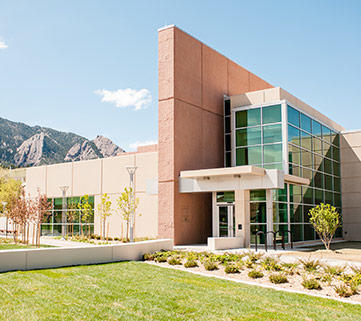
The NEW Precision Measurement Laboratory (PML) is one of the most advanced facilities in the world for research at the frontiers of measurement science. The laboratory will help the National Institute of Standards and Technology (NIST) fulfill its mission to meet the nation's measurement science needs for the 21st century and support U.S. innovation and competitiveness.
The PML meets rigorous requirements for temperature and humidity control, air cleanliness, vibration stability, and electrical power quality. This high level of performance will enhance research productivity and enable the sophisticated measurements needed by U.S. industry and the scientific community in national priority areas, including nanotechnology, communications, security, health care, and emerging technologies such as quantum computing.
Design and construction of the $118.6 million advanced laboratory was funded in part through NIST appropriations, with $84.9 million of that total provided by the American Recovery and Reinvestment Act (ARRA) for customization and interior fixtures. The PML also has new equipment for micro- and nanofabrication and imaging purchased with ARRA funding.
PML Specifications
Total Area: about 26,300 square meters (about 283,000 square feet), including advanced research and measurement laboratories, a "class 100" cleanroom for micro- and nanofabrication, offices, common areas, and conference rooms
Temperature Control (labs): ± 0.5 degrees F (± 0.25 degrees C), more than 10-fold improvement over most older NIST labs
Humidity Control: ± 5 percent humidity versus ± 20 percent in older NIST labs
Air Quality: HEPA-filtered, 1,000-fold improvement over older NIST labs
Vibration Control: velocity amplitude of 3 micrometers per second at 20 hertz (Hz) to 100 Hz, about 15 times better than older NIST labs
Research in the PML
NIST is the nation's source for the most demanding measurements, standards, data, and tools. Technological advances depend on increasingly complex and difficult measurements. For example, NIST Boulder researchers routinely measure dimensions on the nanoscale (the size of a few atoms). At these levels, even tiny fluctuations in temperature, humidity, air quality, or vibration can distort results.
Tight control of environmental conditions in the PML will substantially improve the productivity of research in a wide range of advanced technology areas. Following are some examples.
Atomic Clocks—NIST atomic clock research supports technologies crucial to U.S. economic security and defense, such as advanced navigation and positioning, high-speed telecommunications, and synchronization of many billions of dollars in financial transactions each day. The PML's vibration and temperature control supports continual advances in time keeping, including improvements to U.S. civilian time and frequency standards based on the cesium atom and development of next-generation atomic clocks based on other atoms and ions (electrically charged atoms) such as aluminum, mercury, ytterbium, and calcium.
Frequency Combs—The PML's vibration and temperature controls make it easier for scientists to evaluate and use frequency combs, precision tools for measuring frequencies, or colors, of light. Frequency combs are crucial to an ever-growing range of applications, from advanced atomic clocks to medical diagnosis, high-speed communications, and remote detection and measurement of chemicals for security and environmental monitoring.
Quantum Information—The PML supports NIST's world-leading research on quantum computing using different architectures, including atoms and superconducting circuits, as well as development of single-photon sources and detectors for quantum communications and research on novel states of light. Quantum computers may one day solve important problems that are intractable today. In general, quantum systems can offer new capabilities including powerful measurement techniques.
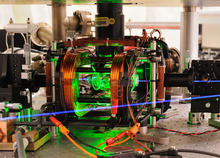
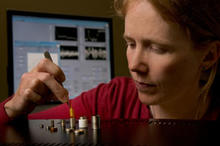
The stringent environmental controls will improve fabrication yields and enable development of more finely tailored devices for quantum communications, electronic metrology, and optical power measurements. The PML also supports research extending the capabilities of atomic force microscopy to characterize mechanical and other properties of materials at the nanoscale.
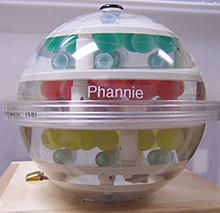
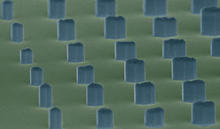
The PML consolidates three former micro- and nanofabrication operations into one modern facility for custom fabrication of superconducting, magnetic, optoelectronic, and micro-electromechanical devices. The clean air and stable temperatures and humidity improve process yield and efficiency in fabrication of devices such as voltage standards, sensor arrays, and complex circuits for measurement applications.
Precision Imaging Facility—The PML's imaging facility provides new capabilities for precisely measuring the structure and chemical composition of materials at sub-nanometer scales, and for studying and creating technologically important materials and devices at the atomic level.
- A helium ion microscope provides a new method for imaging surfaces of biological and inorganic materials.
- A transmission electron microscope offers the resolution needed to characterize crystalline materials used for nanoscale and quantum light sources and quantum information circuits.
- A focused ion beam/scanning electron microscope can selectively mill devices and materials to reveal their internal structure.
- A field ion microscope, or atom probe, can reveal the location and chemical composition of structures invisible to other methods.
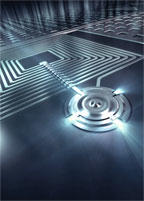
Offices and Conference Center—The PML has office space for about 100 people and a small conference facility, including a patio and exhibit areas, to host meetings of up to 150 attendees.

